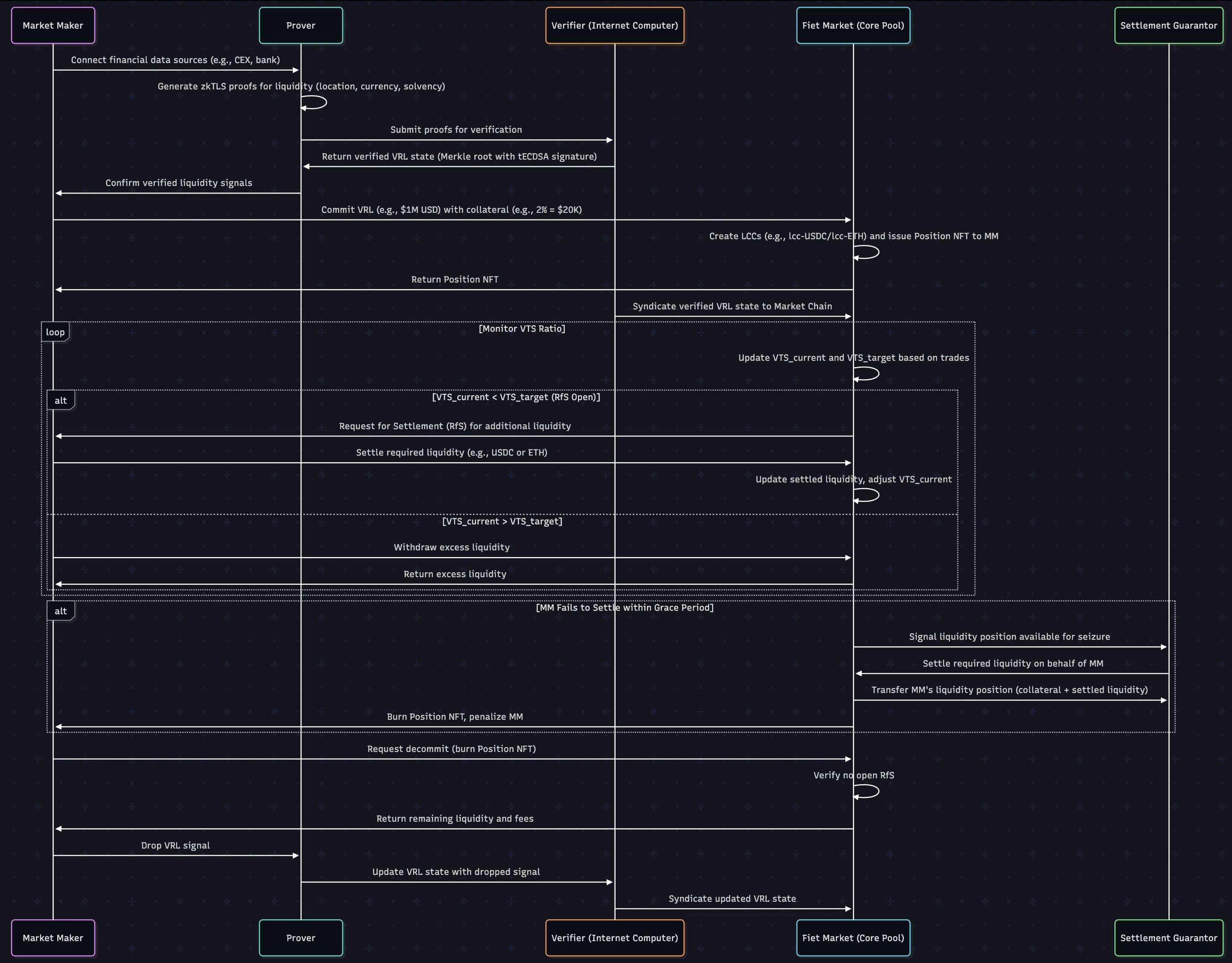VTS acts like a thermostat, balancing liquidity supply with market demand.
How VTS Works
Each currency in a Fiet Market has a VTS ratio, comparing settled liquidity (on-chain funds) to committed VRL. A target VTS sets the desired settlement level, starting at a base rate (e.g., 2% for USDC). As traders demand a currency, the target VTS rises, prompting market makers to settle more funds. When demand falls, excess liquidity can be withdrawn, maintaining efficiency.Key Features
- Dynamic Adjustment: VTS responds to trade volume, increasing settlements during high demand.
- Collateralisation: A base VTS ensures market makers always have some on-chain funds.
- Proportional Obligations: Larger commitments mean higher settlement responsibilities.
- Efficiency: Allows market makers to settle only what’s needed, reducing capital lockup.
VTS adjustments are driven by trades, ensuring real-time alignment with market conditions.
Sequence Diagram

Fiet Market Maker Sequence Diagram
Learn More
Explore related concepts and details:- Liquidity Commitment Certificates: See how VTS governs LCC settlements.
- Settlements: Understand how VTS triggers liquidity delivery.
- Markets: Learn about AMM pools using VTS.
- Technical Specification: Review VTS mechanics.
- Join the Community: Discuss VTS strategies on Discord.